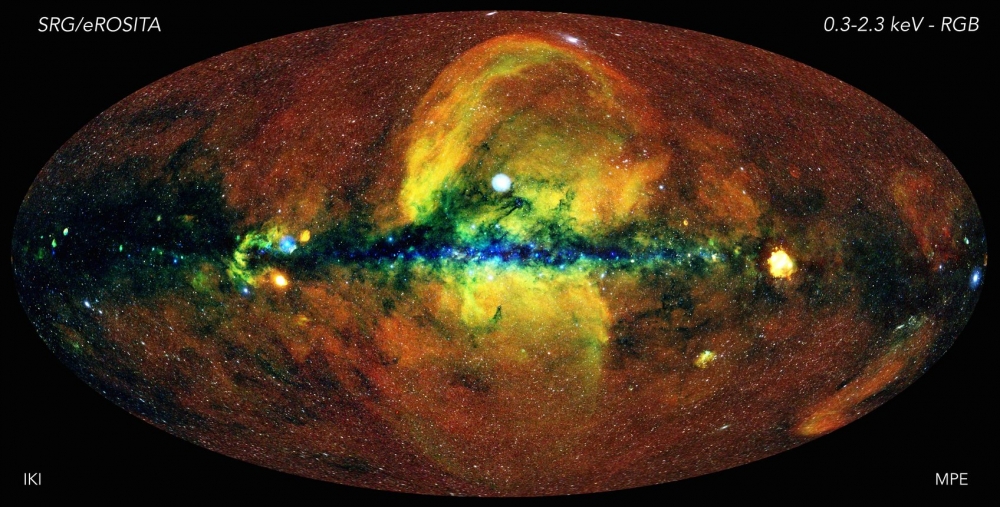Breathtaking new map of the X-ray Universe

© Jeremy Sanders, Hermann Brunner and the eSASS team (MPE); Eugene Churazov, Marat Gilfanov (on behalf of IKI)
By Jonathan Amos
BBC Science Correspondent
Behold the hot, energetic Universe.
A German-Russian space telescope has just acquired a breakthrough map of the sky that traces the heavens in X-rays.
The image records a lot of the violent action in the cosmos - instances where matter is being accelerated, heated and shredded.
Feasting black holes, exploding stars, and searingly hot gas.
The data comes from the eRosita instrument mounted on Spektr-RG.
This orbiting telescope was launched in July last year and despatched to an observing position some 1.5 million km from Earth. Once commissioned and declared fully operational in December, it was left to slowly rotate and scan the depths of space.
eRosita's first all-sky data-set, represented in the image at the top of this page, was completed only last week. It records over a million sources of X-rays.
"That's actually pretty much the same number as had been detected in the whole history of X-ray astronomy going back 60 years. We've basically doubled the known sources in just six months," said Kirpal Nandra, who heads the high-energy astrophysics group at the Max Planck Institute for Extraterrestrial Physics (MPE) in Garching, Germany.
"The data is truly stunning and I think what we're doing here will revolutionise X-ray astronomy," he told BBC News.
See full text
See also Max-Planck webpage